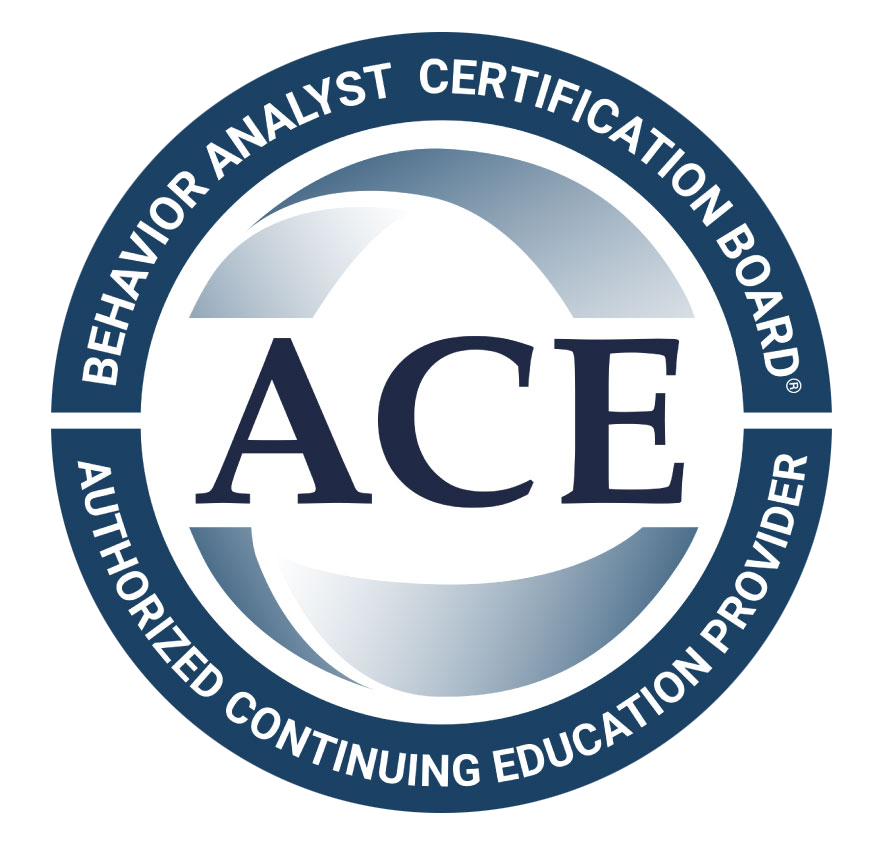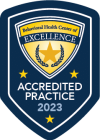Understanding School-Based ABA Therapy
Introduction to ABA Therapy
Applied Behavior Analysis (ABA) is a scientifically validated approach focused on the principles of behavior and learning. It is widely recognized for its efficacy in treating individuals with Autism Spectrum Disorder (ASD) and related conditions. ABA therapy aims to improve social, communicative, and daily living skills through structured interventions.
ABA therapy is characterized by its individualized approach. Each program is tailored to meet the unique needs of the child, focusing on measurable goals and objectives. Techniques commonly used in ABA include positive reinforcement, task analysis, and behavior modification strategies. These techniques help reinforce desired behaviors while minimizing undesirable ones.
For those seeking more detailed explanations of ABA techniques, please visit our article on school-based ABA therapy techniques.
Impact of ABA on Institutionalized Children
The impact of ABA therapy on institutionalized children has been noteworthy. Research has shown significant improvements in various domains, such as social skills, communicative abilities, emotional regulation, and daily living skills. A study conducted with 100 boys aged 4 to 11 residing in institutional care in Wuhan in 2023 revealed impressive outcomes.
The study implemented an ABA program individually for an experimental group of 60 boys, conducted in eight one-hour sessions twice a week. Data collected using the kindergarten inventory of social/emotional tendencies (KIST) indicated substantial improvements in the experimental group compared to the control group. Specific areas of progress included adaptive behaviors, social skills, communicative abilities, and reduced separation anxiety.
| Domain | Improvement in Experimental Group |
|---|---|
| Adaptive Behaviors | Significant |
| Social Skills | Substantial |
| Communicative Abilities | Significant |
| Separation Anxiety | Reduced |
These findings underscore the potential of ABA therapy to positively influence the lives of institutionalized children. Despite variations in individual responses, ABA interventions consistently demonstrate their value in enhancing emotional and social development in children with autism spectrum disorder.
For more information on how ABA is integrated into educational settings, visit our page on ABA therapy in schools. To explore specific interventions, check out our section on school-based behavior intervention programs.
ABA therapy offers promising outcomes, supporting the academic and social success of children with ASD. The next sections will further explore the role of ABA in educational environments, its implementation, and effective techniques to ensure every child's success. For comprehensive services related to ABA in schools, visit our page on school ABA therapy services.
The Role of ABA in Schools
School-based ABA (Applied Behavior Analysis) therapy plays a crucial role in supporting student success, particularly for children with Autism Spectrum Disorder (ASD). By integrating ABA in the classroom, schools can create a structured and supportive learning environment tailored to each child's unique needs.
Integrating ABA in the Classroom
Integrating ABA therapy in the classroom involves using evidence-based strategies and personalized interventions to enhance educational experiences. ABA therapists work closely with teachers, parents, and guidance counselors to understand each child's needs, goals, and preferences. This collaborative approach ensures that ABA techniques are effectively implemented throughout the school day, fostering a holistic support system for the child.
By focusing on individualized teaching, ABA therapy helps students integrate into the least restrictive environment, as required by the Individuals with Disabilities Education Act (IDEA). This approach maximizes learning opportunities and promotes positive social behaviors, making the classroom a more inclusive space for all students.
Compliance with IDEA Regulations
The Individuals with Disabilities Education Act (IDEA) mandates that students with disabilities, including those with ASD, have the right to a free and appropriate public education in the least restrictive environment. ABA therapy helps schools comply with these regulations by providing tailored interventions that support each child's unique needs. This ensures that students receive the necessary accommodations to succeed academically and socially.
ABA therapists collaborate with school staff to conduct behavioral assessments, develop individualized education programs (IEPs), and implement behavior management strategies. These efforts ensure that students with disabilities are given the opportunity to thrive in a mainstream educational setting, alongside their peers.
Benefits of ABA in Education
The benefits of incorporating ABA therapy in school settings are numerous and impactful. Here are some key advantages:
- Personalized Interventions: ABA therapy provides tailored interventions designed to meet each student's unique needs, enhancing their educational outcomes.
- Structured Learning Environment:
ABA techniques help create a structured and supportive classroom environment, promoting positive behaviors and reducing disruptive ones.
- Improved Social Skills:
Through ABA, students learn essential social skills, enabling them to interact positively with peers and adults.
- Academic Success: ABA interventions target specific academic goals, helping students achieve their full potential.
- Holistic Support: By working closely with parents, teachers, and other school staff, ABA therapists ensure comprehensive support for the student in all aspects of their school life.
The application of ABA therapy in schools is a versatile approach.
Implementing ABA Programs
Implementing school-based Applied Behavior Analysis (ABA) therapy programs involves adhering to evidence-based practices, creating personalized interventions, and deploying effective behavior management strategies to support students with Autism Spectrum Disorder (ASD).
Evidence-Based Practices
A significant body of literature demonstrates positive outcomes for individuals diagnosed with ASD who receive ABA therapy. According to Wolf et al. (1964), evidence-based practices such as discrete trial teaching and naturalistic developmental behavioral interventions equip students with the skills needed for academic and social success.
When integrating ABA therapy within the school setting, it is essential that educators and therapists use methods backed by empirical evidence. These practices not only enhance educational outcomes but also ensure that interventions are effective and reliable.
Personalized Interventions
One of the key components of successful school-based ABA therapy programs is the development of personalized interventions tailored to meet each student's unique needs. Personalized interventions are informed by thorough behavior assessments, which help identify specific areas of need and appropriate strategies for addressing them.
These interventions may include:
- Individualized Education Plans (IEP):
Customized plans tailored to the student's learning requirements.
- Adaptive Skill Training:
Helps students acquire daily living skills.
- Social Skills Instruction: Teaches students how to interact effectively with peers.
Behavior Management Strategies
Effective behavior management strategies are essential for the success of ABA programs in school environments. These strategies involve teaching techniques that optimize learning, behavior, and social skills development in students with ASD. Training programs in ABA help teachers apply practices such as behavior analysis, operant conditioning, and reinforcement strategies to create effective behavior management plans.
Common behavior management strategies include:
- Positive Reinforcement: Rewarding desired behaviors to increase their occurrence.
- Token Economies:
Providing tokens as reinforcements that can be exchanged for desired items or privileges.
- Behavior Contracts: Agreements between students and educators outlining expected behaviors and consequences.
ABA therapy in schools fosters a supportive and inclusive learning environment by promoting independence, enhancing student engagement, and yielding positive outcomes for students on the autism spectrum.
Training and Support in ABA
Effective school-based ABA therapy programs rely heavily on providing adequate training and support for all involved parties, including teachers, parents, and school staff. This ensures that the ABA principles are consistently applied across different environments, promoting the best outcomes for students.
Teacher and Parent Education
ABA therapy in schools includes comprehensive training programs tailored to teachers and parents. This is crucial as it equips them with the necessary ABA techniques and strategies to support students with autism. The training focuses on evidence-based practices that improve learning, behavior, and social skills. Key techniques include:
- Behavior Analysis
- Operant Conditioning
- Reinforcement Strategies
These techniques are fundamental for creating effective behavior management plans.
Collaboration with School Staff
Collaboration with school staff is essential for the success of ABA therapy programs. Connect n Care ABA facilitates this through expert consultations and personalized one-on-one support. They ensure that individualized autism services are integrated seamlessly within the classroom setting. Key collaborative activities include:
- Regular meetings to discuss student progress.
- Joint development of individualized behavior plans.
- Continuous professional development sessions.
These efforts ensure that students receive consistent support across all settings within the school.
Functional Behavior Assessments
Functional Behavior Assessments (FBAs) are a critical component of implementing effective ABA interventions. FBAs involve a detailed analysis of a student's behavior to identify the underlying causes and functions. Connect n Care employs FBAs to tailor interventions that are specific to each student's needs. The process typically involves:
- Identifying Specific Behaviors: Determining which behaviors require intervention.
- Collecting Data:
Observing and recording data to understand behavior patterns.
- Hypothesis Development: Forming hypotheses about the function of the behavior.
- Planning Interventions: Developing strategies to address the behavior based on the assessment.
By using FBAs, educators and therapists can create targeted and effective behavior intervention plans.
In summary, school-based ABA therapy programs thrive on well-structured training for teachers and parents, cohesive collaboration with school staff, and meticulous functional behavior assessments.
ABA Therapy Goals
Enhancing Academic Performance
School-based ABA therapy programs are designed to bolster the academic performance of students with autism and related conditions. Utilizing evidence-based practices like discrete trial training (DTT) and naturalistic developmental behavioral interventions, students are equipped with the skills necessary for academic success. This can involve:
- Implementing individualized education plans (IEPs)
- Integrating personalized behavior plans
- Providing systematic, data-driven academic interventions
These tailored approaches ensure that the unique needs of each student are met, thereby improving their ability to learn and perform in school settings.
| Academic Goals | Strategies Used |
|---|---|
| Improve Reading Skills | Discrete Trial Training (DTT) |
| Enhance Math Abilities | Naturalistic Developmental Techniques |
| Develop Writing Skills | Individualized Education Plans (IEPs) |
Developing Social Skills
A significant focus of school-based ABA therapy is the development of social skills. BCBA professionals set specific, measurable goals to address social challenges, current skills, and overall care priorities. The goals include:
- Enhancing communication skills
- Promoting positive peer interactions
- Teaching social norms and appropriate behaviors
These social skills goals are achieved through evidence-based methods like Social Skills Training and Natural Environment Teaching (NET), helping students to better interact with their peers and teachers.
| Social Skills Goals | Strategies Used |
|---|---|
| Improve Communication | Social Skills Training |
| Enhance Peer Interactions | Natural Environment Teaching (NET) |
| Understand Social Norms | Structured Social Interactions |
Addressing Problem Behaviors
Addressing problematic behaviors is another critical goal of ABA therapy. Individualized behavior plans, tailored to the student's unique needs, allow for the reduction and management of disruptive behaviors. Behavior Management Strategies, such as Functional Behavior Assessments (FBAs) and Positive Behavior Support (PBS), are used to identify the root causes of behaviors and implement effective interventions.
| Behavior Goals | Strategies Used |
|---|---|
| Reduce Outbursts | Functional Behavior Assessments (FBAs) |
| Manage Aggression | Positive Behavior Support (PBS) |
| Enhance Self-Regulation | Individualized Behavior Plans |
School-based ABA therapy creates a nurturing environment, where students with autism and related conditions can thrive academically, socially, and behaviorally. By focusing on individualized, evidence-based strategies, students achieve meaningful and lasting improvements in all aspects of their daily school life.
Effective ABA Techniques
Within school settings, ABA therapy programs utilize various techniques to support the development and success of students with autism and related conditions. These methods are specifically tailored to aid in skill acquisition and behavior modification in children. Here, we will explore three highly effective ABA techniques: Discrete Trial Training (DTT), Natural Environment Teaching (NET), and Social Skills Training.
Discrete Trial Training (DTT)
Discrete Trial Training, commonly known as DTT, is a structured method used extensively in school-based ABA therapy programs. The technique breaks down skills into smaller, manageable components, which are taught step-by-step through repeated trials until the child masters each skill.
The essential components of a DTT session include:
- Antecedent: The instruction or prompt given by the therapist.
- Behavior:
The child's response to the instruction.
- Consequence: The reinforcement provided based on the child's response.
DTT is highly effective for teaching new skills and behaviors due to its structured nature and the use of positive reinforcement.
| DTT Component | Description |
|---|---|
| Antecedent | Instruction or prompt provided to the child. |
| Behavior | Child's response to the instruction. |
| Consequence | Reinforcement or feedback following the response. |
Natural Environment Teaching (NET)
Natural Environment Teaching emphasizes learning in a natural context rather than a structured setting like DTT. This method focuses on using the child's interests and daily activities to teach skills, making learning more relevant and enjoyable for the student. NET is particularly useful for promoting generalization, ensuring that the skills learned are applied across various settings and situations.
Key aspects of NET include:
- Child-led activities:
Leveraging the child’s interests to guide the learning process.
- Generalization:
Teaching skills in varied contexts to promote everyday use.
- Reinforcement: Providing positive reinforcement naturally aligned with the child's activities and interests.
Examples of activities in NET:
- Learning colors while playing with building blocks.
- Developing language skills during snack time.
NET allows for more spontaneous and flexible learning opportunities, which can be especially beneficial in school environments.
Social Skills Training
Social Skills Training is a fundamental component of school-based behavioral intervention. This technique involves teaching children the necessary skills to interact appropriately with peers and adults. These skills are vital for developing meaningful relationships and succeeding in social environments, such as schools.
Components of Social Skills Training:
- Role-Playing:
Practicing social scenarios to teach appropriate responses.
- Modeling:
Demonstrating desired social behaviors for the child to emulate.
- Positive Reinforcement: Acknowledging and rewarding appropriate social interactions.
How Social Skills Training Supports Students:
- Enhance communication skills:
Teaching effective ways to express needs and emotions.
- Improve peer interactions:
Facilitating group activities and cooperative play.
- Reduce social anxiety: Building confidence through repeated practice.
Social skills are crucial for students' overall development and integration into school life.
These techniques—DTT, NET, and Social Skills Training—are essential tools in the effective implementation of ABA therapy within school settings, helping students with autism thrive academically and socially.
SOURCES:
https://pmc.ncbi.nlm.nih.gov/articles/PMC11487924/
https://pmc.ncbi.nlm.nih.gov/articles/PMC7265021/
https://www.webmd.com/mental-health/what-is-applied-behavior-analysis
https://www.gvsu.edu/autismcenter/start-connecting-applied-behavior-analysis-aba-in-schools-494.htm
https://psychcentral.com/pro/child-therapist/2019/10/examples-of-goals-to-address-in-aba-applied-behavior-analysis#1
https://online.regiscollege.edu/blog/aba-therapy-examples/









